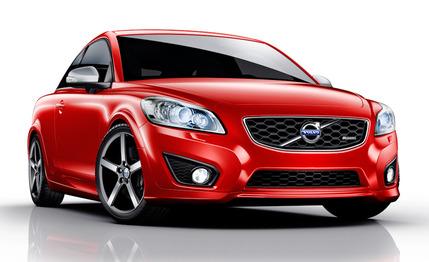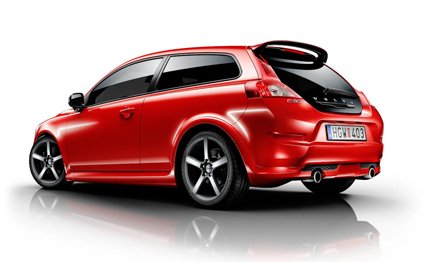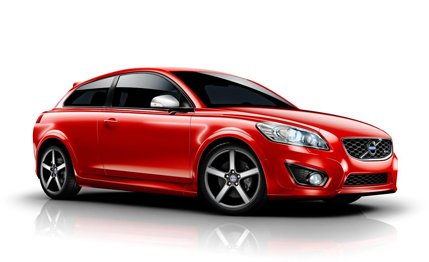
 Quick Spin
Quick Spin
What Is It?
The R-Design is the sportiest member of the Volvo C30 lineup. Both the R-Design and the standard C30 T5 receive a face lift for 2011—the first since the car’s introduction for 2008—featuring a different headlight shape and a bigger Volvo iron mark in the grille. The R-Design adds aesthetic differentiators such as a full body kit with a monochromatic paint scheme, R-Design logos inside and out, matte-silver side-mirror housings, and 18-inch wheels. The changes aren’t all of the design variety, though, because for 2011 the R-Design package adds stiffer springs, retuned dampers, and quicker steering. The 2011 nose job in concert with the R-Design package almost managed to convince us that the C30 is a real hot hatch.


How Does It Drive?
A lot like it used to, which is to say well composed and easy to direct, although the R-Design’s chassis changes make for a harsh ride at times. Call us Goldilocks: We thought the original suspension was too soft, but now we think Volvo might have overshot the sweet spot. But it’s getting warmer now. Thankfully, some of the numbness has been removed from the steering, although on-center feel is still lacking. As expected, torque-steer and traction issues persist when trying to put the 227 hp and 236 lb-ft of torque down to the pavement through the front tires. Our tester was equipped with a five-speed automatic—a six-speed manual is standard—and this is one of the rare occasions when we recommend the slushbox. In our experience, the C30’s manual, with its rubbery shifter and feedback-free clutch, doesn’t add any driver involvement. The auto at least allows gear selection through its manumatic gate.
How Does It Stack Up?
As far as semi-luxurious front-wheel-drive hatchbacks go, the C30's only real competition comes from the Mini Cooper S and Volkswagen GTI, both of which start at slightly lower price points. The Volvo matches the Mini on interior quirkiness, but it can’t foster the same feeling of man-machine connection that comes from sitting in the GTI or Cooper S. And those two cars feature much more communicative and entertaining chassis. When it comes to usefulness, Volvo’s slant-back hatch falls short on stuff-swallowing ability, too, with just 20 cubic feet behind the front seats with the rears folded; the Mini can eat 24 cubes, and the GTI will scarf 44. For the price of our tester, we'd also suggest looking at a base BMW 128i coupe. The jump from the C30’s front-wheel drive to the Bimmer’s rear drive is less drastic than you might think: BMW recently admitted that 80 percent of 1-series owners who were surveyed believed their cars were front-wheel drive.
What's the Cost?
A base C30 runs $25,450. Upgrading to the R-Design model adds $2350. The automatic transmission costs $1250. Our test car had the $1800 Preferred package (power sunroof, keyless entry and start, power front seats), the $900 Climate package (heated front seats, headlamp washers, rain-sensing wipers, auto climate control), a set of $800 swiveling xenon headlights, and $400 for Sirius satellite radio, bringing the total to a very premium $32,950. Ticking boxes for the handful of other options—special paint, a blind-spot warning system, and an upgraded stereo with a nav system—pushes the price past $36,000. Zoinks.
If you're sold on the C30 and want the added looks of the R-Design, you might be able to justify the extra cost from a Scandinavian-design point of view—it’ll nicely complement your IKEA-filled apartment. But we’ll take the less expensive and more satisfying GTI.

